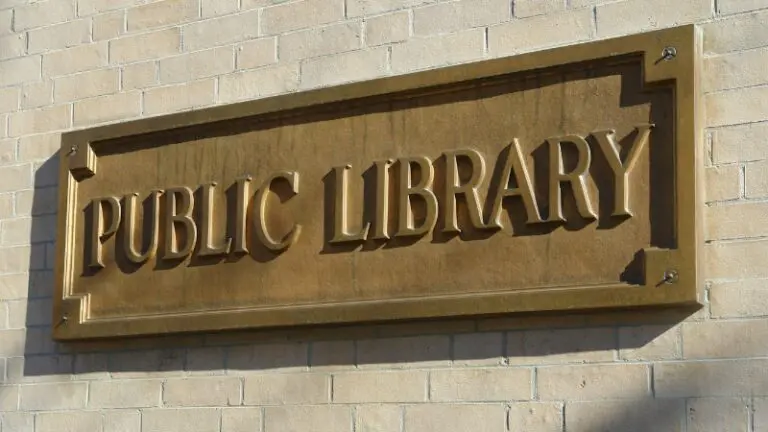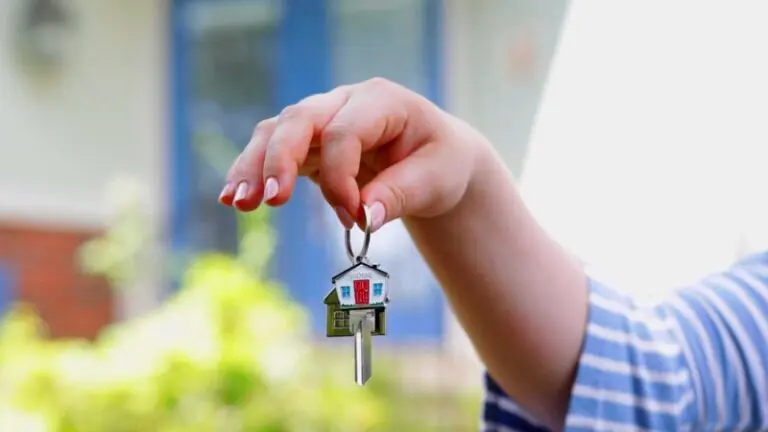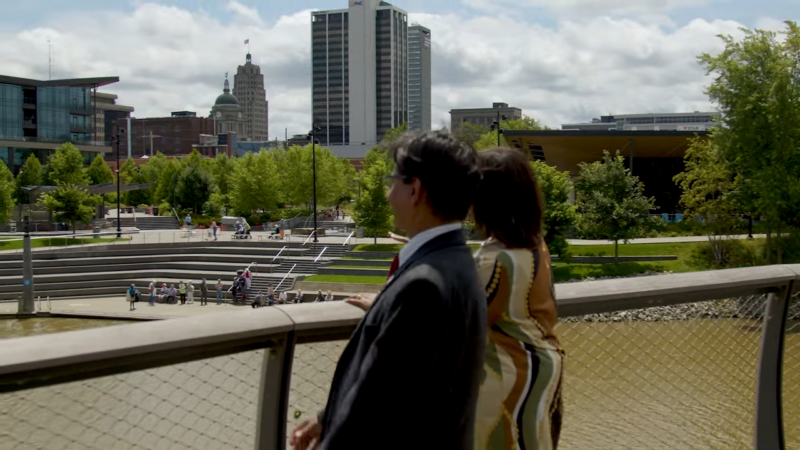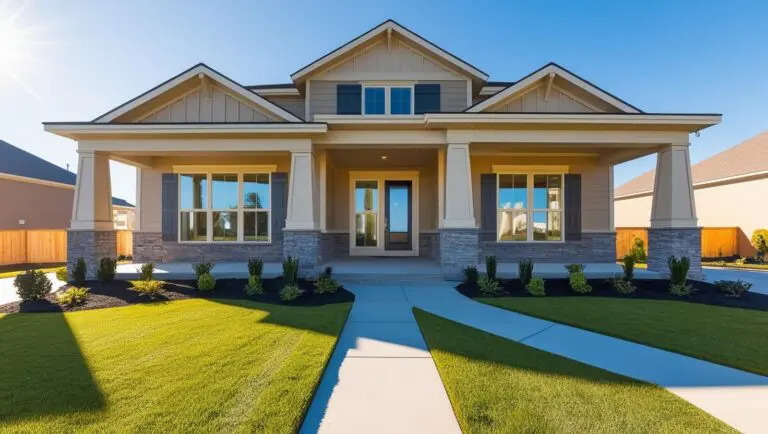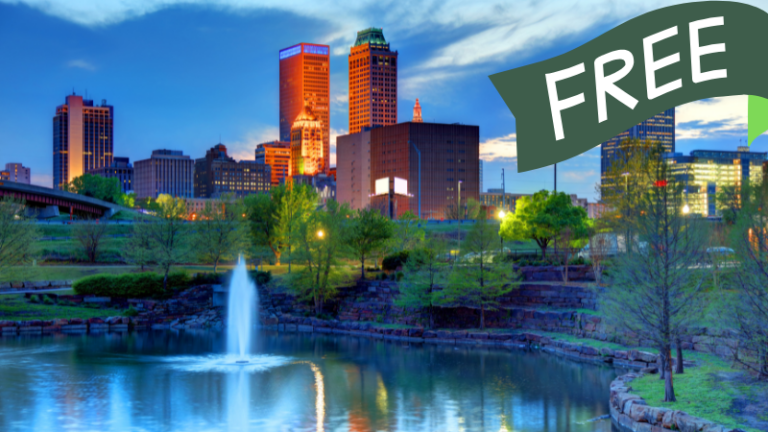Fort Wayne, like many cities across the U.S., is growing and evolving in ways that reflect both its rich history and its bright future. If you’ve lived here for a while, you’ve probably noticed how the city feels a little busier each year—new faces, new businesses, and a fresh sense of energy.
According to the U.S. Census Bureau, as of July 1, 2023, Fort Wayne stands as the 83rd largest city in the nation, with more than 270,000 residents within its city limits.
Table of Contents
TogglePopulation Growth
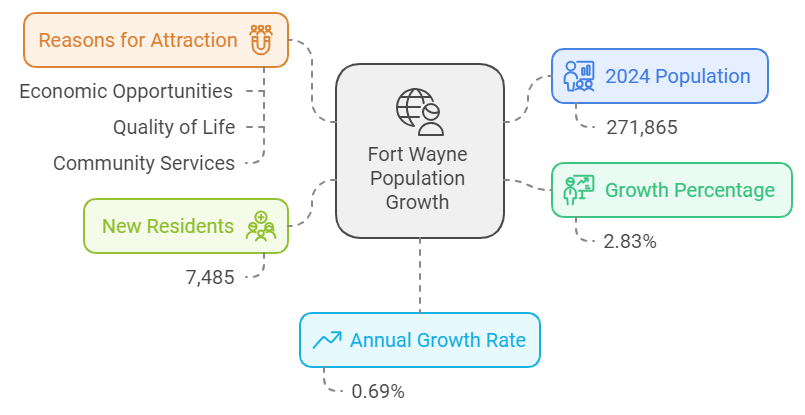
As stated by World Population Review, as of 2025, Fort Wayne has a population of 271,865. That’s a bump of 2.83% from 2020, adding 7,485 new residents. While some might see this 0.69% annual growth rate as modest, it’s proof that Fort Wayne is moving forward. People are drawn here, and there’s a reason for that.
In a world where many cities are experiencing stagnation, Fort Wayne’s steady increase shows that it’s a place where families, businesses, and individuals want to settle. It’s the kind of growth that doesn’t overwhelm but instead keeps the city in a constant state of improvement.
That’s the sweet spot, right? Enough to bring new opportunities, but not so much that it loses its unique character.
Who Makes Up the Fort Wayne Population?
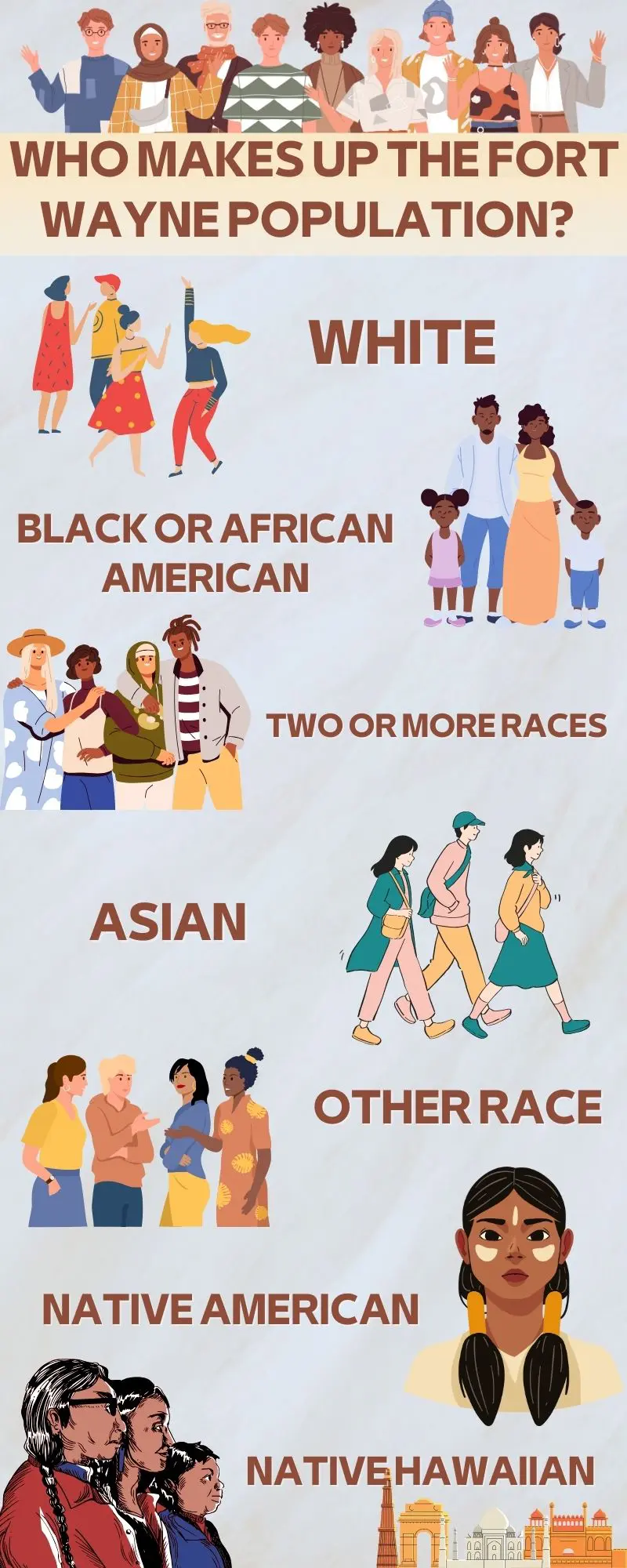
The population here is incredibly diverse. The largest ethnic group is White, comprising 68.07% of the population. That’s 180,054 people. But what’s most interesting is the story beyond those numbers.
There’s a vibrant African American community making up 15.23% of the population, or roughly 40,285 people.
This diversity brings so much richness to our daily lives, from food to cultural events.
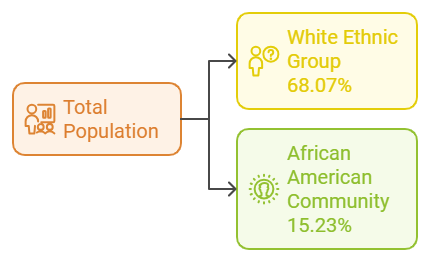
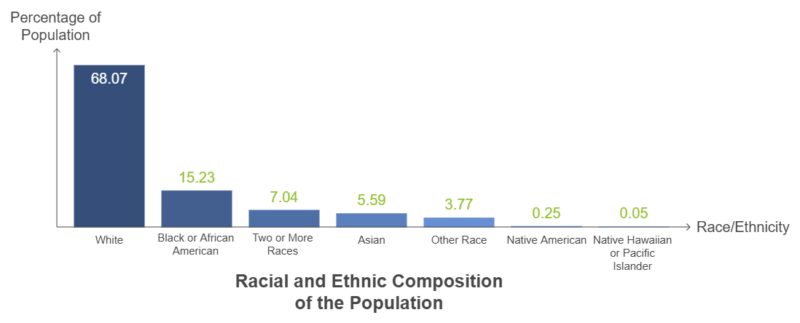
| Race/Ethnicity | Percentage | Population |
| White | 68.07% | 180,054 |
| Black or African American | 15.23% | 40,285 |
| Two or More Races | 7.04% | 18,624 |
| Asian | 5.59% | 14,781 |
| Other Race | 3.77% | 9,965 |
| Native American | 0.25% | 674 |
| Native Hawaiian or Pacific Islander | 0.05% | 131 |
Household Composition and Family Life
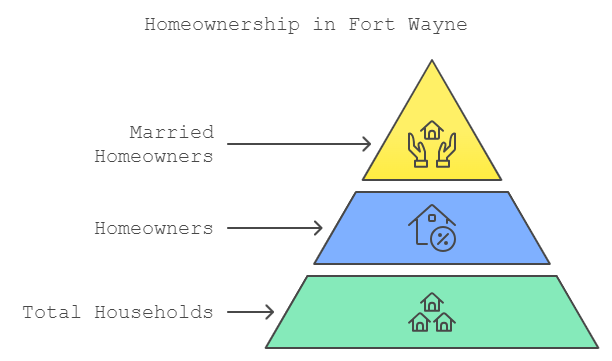
In fact, 62.6% of households own their homes, and when we look at married households, 83.5% are homeowners.
That’s pretty significant, especially at a time when homeownership seems like a distant dream for many in other parts of the country.
The average household size is 2.41 people, and for families, it jumps to 3.11. Those numbers might sound small, but they tell a bigger story of Fort Wayne as a place that values close-knit living.
It’s not about sprawling mansions or giant estates but rather about homes filled with life and connection. These numbers suggest a community where people are putting down roots, not just passing through.
Income and Education
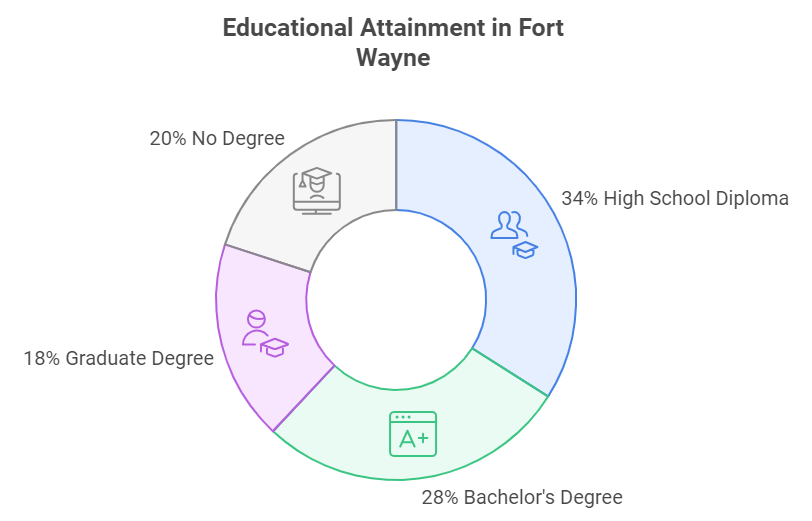
When you look at education, you see how it shapes income potential. Residents with a high school diploma earn about $34,265 on average, but that number jumps to $53,552 for those with a bachelor’s degree.
And if you’ve got a graduate degree? Your average earnings hit $69,869. So, education clearly plays a big role in economic opportunity here.
Here’s a quick breakdown of educational attainment for residents over 25:
| Education Level | Percentage |
| High School Graduate | 28.99% |
| Some College | 21.73% |
| Bachelor’s Degree | 18.93% |
| Graduate Degree | 9.21% |
A Community of Veterans
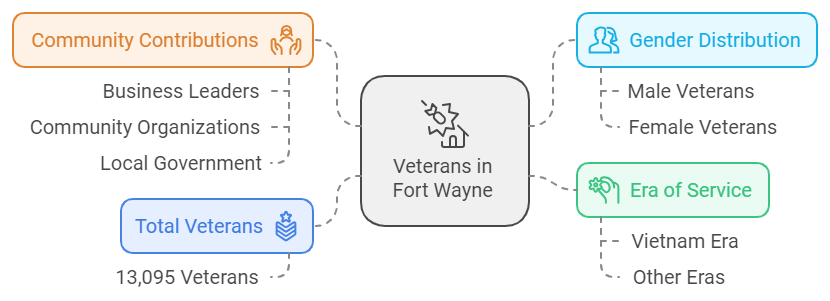
According to Census.gov, Fort Wayne is home to 13,095 veterans, with the majority being male (11,986) and about 1,109 female veterans. The largest group comes from the Vietnam era, with 4,048 veterans. Veterans play an important role in the city, often becoming leaders in business, community organizations, or local government.
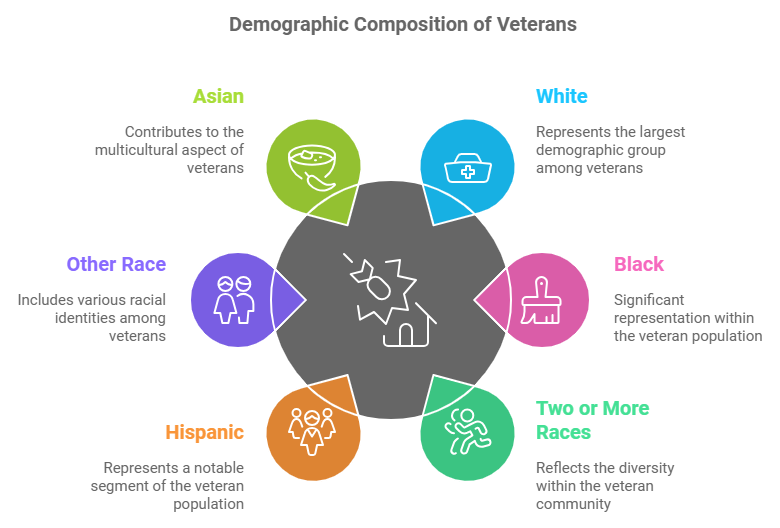
| Name | Veterans | % of Total |
|---|---|---|
| White | 10,716 | 7.44% |
| Black | 1,620 | 5.71% |
| 2+ Races | 478 | 4.81% |
| Hispanic | 433 | 2.65% |
| Other Race | 140 | 1.99% |
| Asian | 109 | 1.08% |
| Native American | 32 | 6.03% |
Fort Wayne’s veterans are an integral part of what makes this city resilient and strong. Furthermore, if you want to find out more about veterans, check out the news at wane.com.
Labor Force and Employment
Fort Wayne, Indiana, roughly 300,000 residents. Beautiful city, not a hillbilly. pic.twitter.com/UiZX712s7L
— CCB (@ccbreborn) October 25, 2024
What About Language?
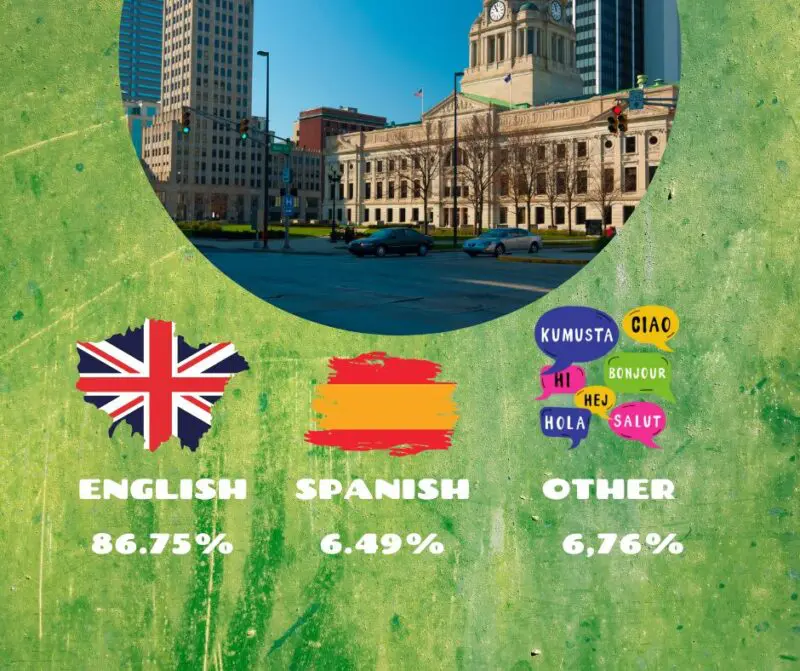
While 86.75% of residents speak only English, there’s a substantial portion who speak other languages, including Spanish (6.49%). Having multiple languages in the workforce can be a big advantage for businesses, opening up opportunities for growth both locally and internationally.
Poverty by Race
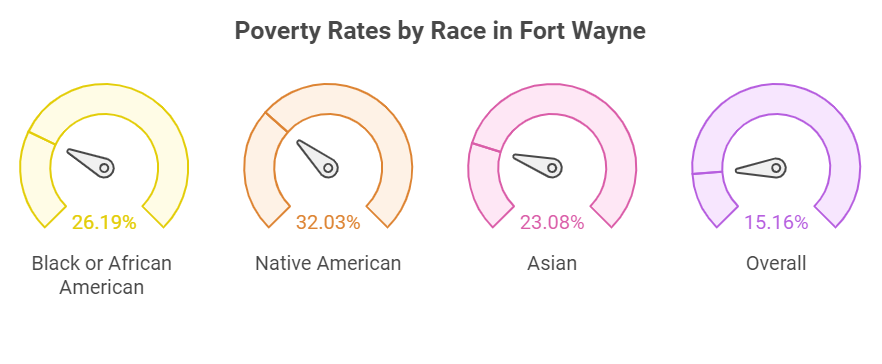
When we examine poverty rates by race, we see some significant disparities.
The overall poverty rate in Fort Wayne is 15.16%, but that number changes drastically depending on race.
At the same time, we can say that poverty, while it influences crime rates generally, doesn’t seem to be so drastic in Fort Wayne, since these rates are relatively stable.
Where We Are Now
Fort Wayne is no longer the manufacturing powerhouse it once was. Its economy has shifted to more modern industries like transportation, healthcare, and financial services. But that shift hasn’t diminished its sense of purpose. If anything, it’s created new opportunities for the city to grow in different ways.
The jobs available now offer a better balance between traditional blue-collar work and white-collar careers.
The city’s expansion into industries like logistics and leisure is a sign of progress, and it’s an exciting time to be a part of it.
FAQs
In Summary
Looking ahead, it’s clear that Fort Wayne’s growth won’t stop anytime soon. With a diverse population, strong community values, and a commitment to economic development, the city is well-positioned for continued success.
Challenges remain, especially when it comes to issues like poverty and income inequality, but the sense of optimism here is hard to ignore.
Sources
1. World Population Review – Fort Wayne, Indiana Population 2024
2. Wane – City of Churches: The history and significance of churches in Fort Wayne
3. The Journal Gazette – Fast-growing city ranks 83rd in nation, census data shows
4. World Atlas – Fort Wayne, Indiana
5. City Data – Fort Wayne, Indiana (IN) Poverty Rate Data
Related Posts:
- Indiana Population 2025 - Trends and Growth
- How Does the Fort Wayne Crime Rate Look Like in 2025?
- South Bend Population 2025 - What’s Driving Its Growth
- Lafayette, Indiana Population Statistics 2025 -…
- Indiana Car Accident Statistics 2025: Key Statistics…
- Indiana Lung Cancer Statistics 2025: Key Data and Trends






